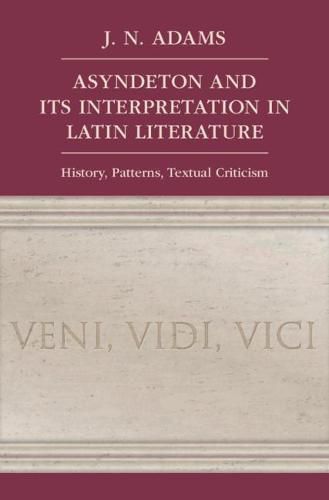Readings Newsletter
Become a Readings Member to make your shopping experience even easier.
Sign in or sign up for free!
You’re not far away from qualifying for FREE standard shipping within Australia
You’ve qualified for FREE standard shipping within Australia
The cart is loading…






Asyndetic coordination (omission of coordinators such as ‘but’, ‘or’, ‘and’) is ancient in Indo-European languages. Most commentaries on Greek and Latin texts index ‘asyndeton’, but wide-ranging treatments of asyndeton across a variety of literary and non-literary genres are largely lacking, and comments are often impressionistic. This book provides the most comprehensive account of asyndeton in Latin ever attempted, and it also contains material from Greek and Umbrian. It analyses asyndeta in diverse genres from early Latin to the early Empire, including prayers and laws, and aims to identify types, determinants, generic variations and chronological changes. Since coordinators are easily left out or added by scribes, criteria are discussed that might be used by editors in deciding between asyndeton and coordination. External influences on Latin, such as Greek and Italic, are also considered. The book will be essential for all scholars of Latin language and literature as well as historical linguistics.
$9.00 standard shipping within Australia
FREE standard shipping within Australia for orders over $100.00
Express & International shipping calculated at checkout
Asyndetic coordination (omission of coordinators such as ‘but’, ‘or’, ‘and’) is ancient in Indo-European languages. Most commentaries on Greek and Latin texts index ‘asyndeton’, but wide-ranging treatments of asyndeton across a variety of literary and non-literary genres are largely lacking, and comments are often impressionistic. This book provides the most comprehensive account of asyndeton in Latin ever attempted, and it also contains material from Greek and Umbrian. It analyses asyndeta in diverse genres from early Latin to the early Empire, including prayers and laws, and aims to identify types, determinants, generic variations and chronological changes. Since coordinators are easily left out or added by scribes, criteria are discussed that might be used by editors in deciding between asyndeton and coordination. External influences on Latin, such as Greek and Italic, are also considered. The book will be essential for all scholars of Latin language and literature as well as historical linguistics.